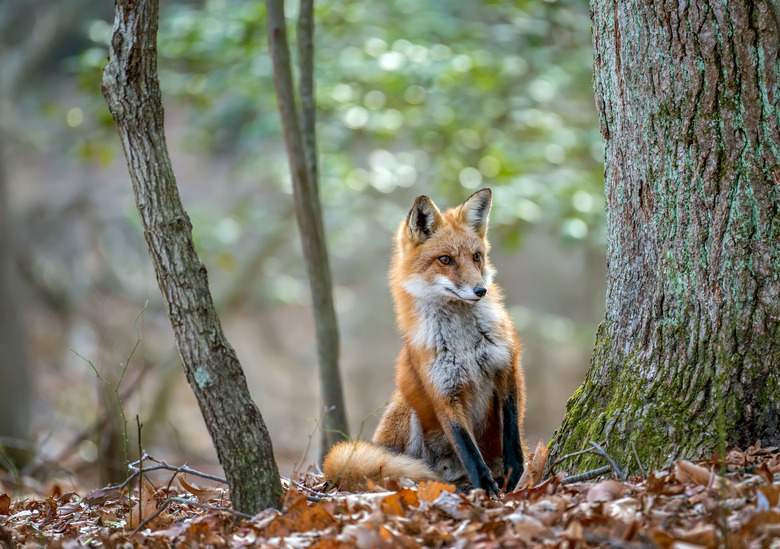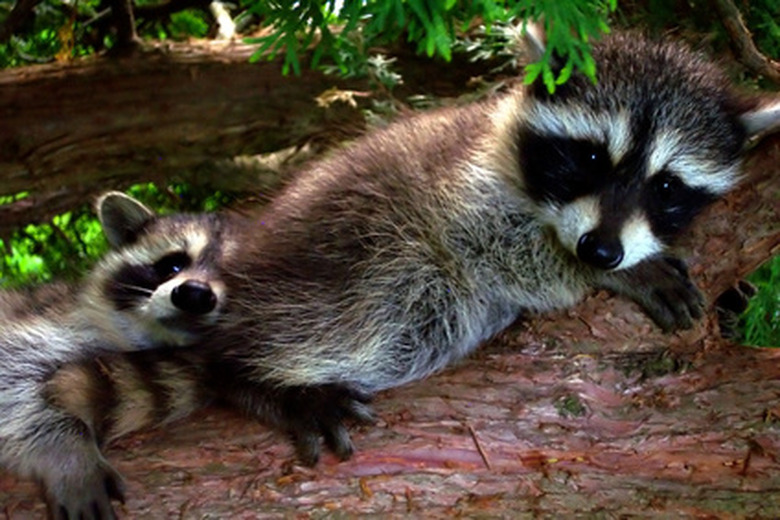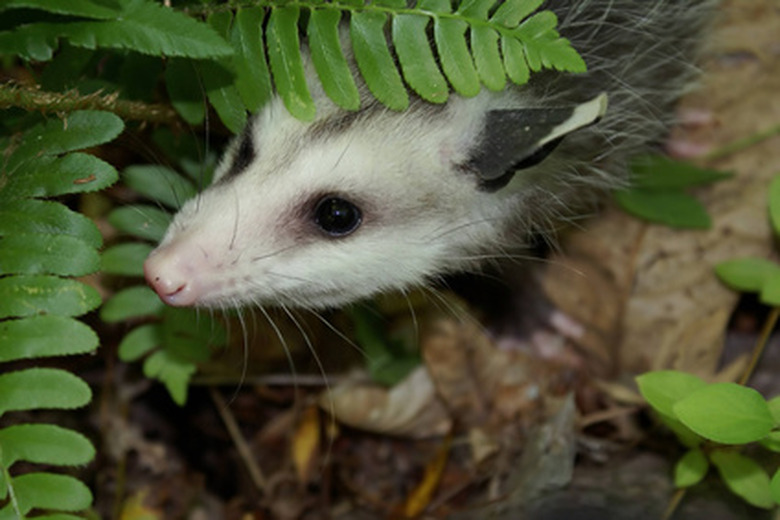Animals In A Woodland Ecosystem
There are many kinds of woodland ecosystems on earth. They can be classified by tree type as evergreen needle leaf, evergreen broadleaf, deciduous needle leaf, deciduous broadleaf and mixed forests. They can also be classified by biome such as polar, boreal, temperate, sub-tropical and tropical.
This discussion treats the North American temperate mixed woodland ecosystem. Woodland forest animals in this ecosystem have mechanisms for enduring harsh winter months and for foraging in tree canopies and understory plants. Tree trunks and forest floor litter offer shelter and cover. Animal colorings often show barred and speckled patterns of shade and light.
What Is a Woodland Ecosystem?
What Is a Woodland Ecosystem?
While a woodland is often used as a synonym for a forest ecosystem, biologists and ecologists have a distinct definition for how a woodland differs from a forest.
A woodland ecosystem is often defined as an "in between" ecosystem that appears between dense forest ecosystems and open land ecosystems. These ecosystems usually have an "open canopy" meaning that the trees are more sparse, not as tall and don't necessarily create a thick canopy cover like you see with other forest ecosystems.
This allows much more sunlight to reach the forest floor, which allows for other plants and animals lower to the ground to flourish. However, it also means conditions are much drier and there isn't much (or any) shade or protection from the sun.
Woodland Forest Herbivores
Woodland Forest Herbivores
Plant-eating forest herbivores range from insects (ex: grasshoppers, butterflies and leafhoppers) and other invertebrates such as earthworms and sowbugs, to small mammals like deer mice, tree squirrels, cottontail rabbits and porcupines. Examples of large woodland forest herbivores are white-tailed deer, mule deer and elk. Herbivores are more plentiful than carnivores and are the bottom rung of the food chain. Most small herbivores overwinter. Insects survive in cocoons or protected hiding places. Small mammals dig dens or burrows. Larger mammals often remain active to search for food even in winter. Elk and deer dig through snow for dried grasses.
Carnivores
Carnivores
Meat-eating woodland forest animals range in size from predatory insects such as assassin bugs and robber flies to other invertebrates such as orb-weaving spiders to larger vertebrate animals. Small mammals like short-tailed shrews and weasels eat primarily rodents.
Woodland reptiles including snakes such as timber rattlesnakes, copperheads and rat snakes also eat rodents. Forest-dwelling lizards such as northern fence lizards and ground skinks eat insects. Reptiles overwinter in dens or under cover such as logs or rocks. Insectivorous amphibians like tree frogs, wood frogs and various kinds of salamanders inhabit woodlands.
Medium-sized woodland forest animals include bobcats and martens. Large carnivores such as cougars and wolves have been hunted almost to extinction in much of North American woodland ecosystems.
Trees offer homes to great horned owls, long-eared owls, screech owls and barred owls; raptors such as Cooper's hawk, sharp-shinned hawk and the northern goshawk hunt in woodlands. Hoary bats, red bats and silver-haired bats live in and among woodland trees.
Omnivores
Omnivores
These are woodland creatures that eat both plants and meat. Some insects, such as crickets, are omnivores. Most songbirds eat both insects and plants, as do crows and ravens. Woodland creatures like red foxes, gray foxes, coyotes, skunks, raccoons and opossums inhabit woodlands and eat a varied diet.
Bears are the largest of the forest omnivores. Feral pigs, which inhabit southeastern temperate woodlands, will also eat anything.
Scavengers
Scavengers
A vital link in the ecosystem is filled by woodland creatures that clean up dead organic matter. Many insects subsist on rotting plant and animal material, such as fly larvae, dung beetles and carrion beetles.
Among birds, vultures are the prime example of a scavenger. The black vulture nests in thicketed woodland habitats. American crows and common ravens will eat carrion, as will opossums, coyotes and feral wild pigs.
References
- Millenium Assessment: Forest and Woodland Systems
- New Jersey Department of Environmental Protection: Field Guide to Reptiles and Amphibians of New Jersey
- World Wildlife Foundation: Forest Habitat
- New Hampshire PBS: Temperate Deciduous Forests
- World Wildlife Foundation: Five Animals That Depend on Forests
- National Geographic: Woodland
Cite This Article
MLA
Chaney, Cathryn. "Animals In A Woodland Ecosystem" sciencing.com, https://www.sciencing.com/animals-woodland-ecosystem-6903097/. 22 November 2019.
APA
Chaney, Cathryn. (2019, November 22). Animals In A Woodland Ecosystem. sciencing.com. Retrieved from https://www.sciencing.com/animals-woodland-ecosystem-6903097/
Chicago
Chaney, Cathryn. Animals In A Woodland Ecosystem last modified August 30, 2022. https://www.sciencing.com/animals-woodland-ecosystem-6903097/




